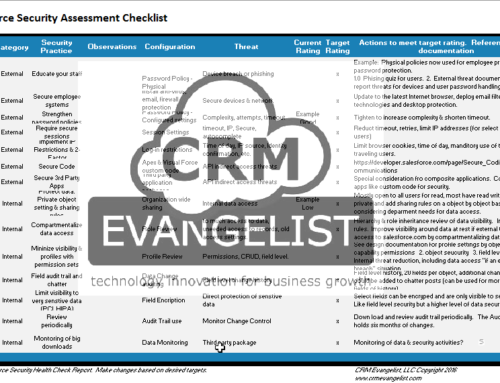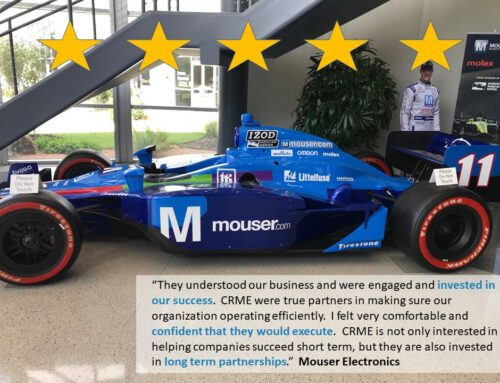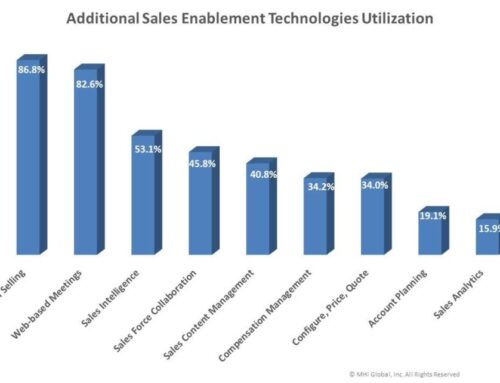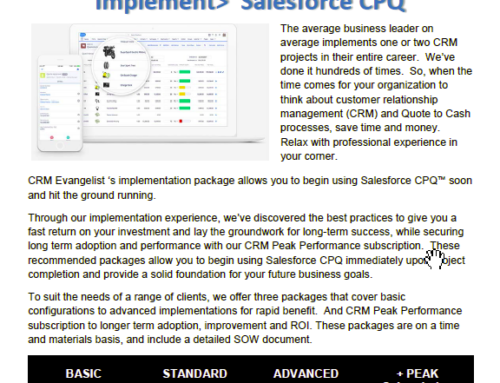In this first post in the series, Giving CRM a CX Makeover, we discuss Customer Relationship Management (CRM) from the perspective of the Customer Experience (CX). We also highlight the compelling business justification for pursuing a CRM CX Makeover project.
Giving CRM a CX Makeover, Part 1:
Does Your CRM Need a CX Makeover?
The top research groups continue to say the same thing: CRM is the cornerstone that enables delivering great customer experiences, and organizations who deliver great customer experiences obtain the competitive advantage. Don’t take my word for it. See for yourself. Read this great blog post by Forrester Research, Inc. analyst, Michael Gazala, called: “Become Customer-Obsessed or Fail.”
Obtaining the Competitive Advantage
CRM in this context does not specifically refer to CRM technology products like CRM software, social engagement platforms, mobile apps, or marketing automation tools. While these products provide important functionality, they are not the foundation of the CX. They are tools we use to deliver the various experiences that occur over the lifetime of the customer.
In its report, “The Forrester Wave™: CRM Suites for Midsize Organizations, Q1 2015,” the respected independent research firm Forrester Research, Inc. identifies three key takeaways. The first and possibly most important identifies the source of competitive advantage.
Forrester states:
“The only source of competitive advantage is an obsession with understanding, delighting, connecting with, and serving customers. CRM is critical to this success, but can only be successful if the foundations for sales, marketing, and service processes and technology are solid.”
Each customer interaction produces an experience and a perception as outcomes of the interaction. The quality of each experience we deliver to our customers, as they accumulate over the lifetime of the customer relationship, largely defines our ability to compete. Our ability to compete determines the level of our successes and failures.
This report indicates that CRM is critical to our success and that the success of CRM depends on the foundation on which it is built. The foundation of CRM is erected on four pillars – strategy, people, process, and technology – as they apply to customer-facing interactions.
Simply stated, our success with CRM and our level of competitive advantage or disadvantage depends on how we apply strategy, people, process, and technology to deliver customer experiences.
CRM, Customer Experience, and the Customer Journey
Our CRM strategy governs how we design and engineer the experiences we provide to our customers. The business processes and technology tools we deploy – and the people who depend on them – define the mechanisms we use to deliver these experiences.
The flow of one interaction to the next one defines the journey our customer takes with us, and individual interactions provide the current context within the overall journey. Taken together, the flow of all interactions define the customer journey.
Understanding the Customer Experience
Each interaction – called a customer “touch” – results in an experience and produces a perception in the customer’s mind. In most cases, the customer’s perception of the experience is more important than the result of the interaction.
Not all touch points are equal. People are unique. Each individual perceives things differently. We all have our own goals, prejudices, preferences, and priorities. The journey is not the same for everyone. Some touch points may be decisive moments for some individuals but not for others.
To deliver the desired customer experience, we must personalize touch points and critical moments based on the type of individual interacting with us. To do this we need to understand the customer’s persona.
The customer journey varies for each persona. Some touch points are more critical than others are because they greatly influence the customer’s decision making. These touch points are moments of truth when the customer makes a decision. These moments of truth may be different for different personas.
While it is important that we deliver a pleasant experience and create a positive impression all of the time, it is critical that we do this for every moment of truth for each customer persona.
Understanding the Customer Journey
In most cases, a customer’s journey begins before they ever interact with us. For the customer, the journey begins when he or she recognizes a need or want and has a desire to address that need or want.
From our perspective, the customer journey begins the first time a prospective lead first interacts with us. It does not matter what the purpose of the interaction is, how it takes place, or what method the customer uses to interact. It is the initial customer touch point.
We may not even know who the customer is at the point of the first interaction. Regardless, the first touch point is the moment the customer’s journey begins.
In many cases, the first touch point is a critical moment of truth. This is when the customer decides to engage and continue the journey or to disengage and abandon it.
This may be as simple as clicking a link in an ad, watching a video, or visiting a web page. If they click the link, watch the video, or view the page, the journey continues. If not, the journey ends.
The customer journey ends when the customer desires no further interactions. The person or organization makes a firm decision to end the relationship. When this occurs, there is very little we can do to overturn this decision. That is why we must do everything possible to avoid arriving here. It is the end of the journey.
The customer journey is a dynamic and evolving chain of experiences, perceptions, and decisions resulting from touch points occurring throughout the customer relationship lifecycle. This is the end-to-end customer journey.
Does Your CRM Need a CX Makeover?
Do your current business processes and CRM technology tools enable you to deliver positive customer experiences at every touch point and each moment of truth throughout the entire customer journey? If not, maybe it is time to give your CRM strategy, business processes, and CRM tools a CX Makeover.
The concept of engineering the design of your CRM tools based on personas and the customer experiences within each persona’s customer journey is relatively new. To date, relatively few organizations have done this.
Because so few have made this leap, giving your CRM a CX Makeover is an opportunity to create a strategic advantage for your organization.
Just as importantly, implementing CX-focused CRM enables you to deliver experiences that cement the loyalty of your existing customers. You may create your greatest advocates and brand evangelists in the process.
So how do we do this? What is the best approach? Stay tuned. A topic like this is too broad to cover in one or two blog posts. It will take a full series. We call it: Giving CRM a CX Makeover.
If you would rather not wait and want to get started with your CRM CX Makeover, just let us know.





